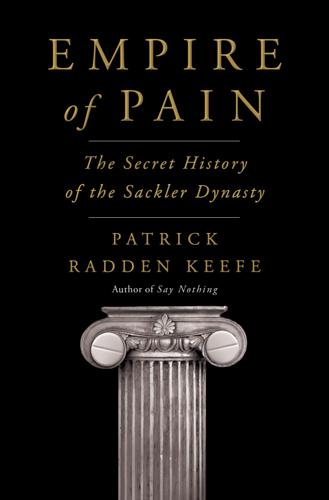
Empire of Pain: The Secret History of the Sackler Dynasty
by
Patrick Radden Keefe
Published 12 Apr 2021
the Guggenheim announced: “Guggenheim Museum ‘Does Not Plan to Accept Any Gifts’ from the Sackler Family,” Hyperallergic, March 22, 2019; “Guggenheim Museum Says It Won’t Accept Gifts from Sackler Family,” New York Times, March 22, 2019. the National Portrait Gallery in London: “British Gallery Turns Down $1.3 Million Sackler Donation,” New York Times, March 19, 2019. “seek or accept further donations”: “Tate Galleries Will Refuse Sackler Money Because of Opioid Links,” New York Times, March 21, 2019. “We do not intend to remove”: Ibid. Guggenheim let it be known: “Guggenheim Museum Says It Won’t Accept Gifts from Sackler Family.” “I will not do the show”: “Nan Goldin Threatens London Gallery Boycott over £1M Gift from Sackler Fund,” Observer, Feb. 17, 2019.
…
“Will do”: Arnab Ghatak to Martin Elling, email, July 4, 2018. “press attention that these legal cases”: “Museums Cut Ties with Sacklers as Outrage over Opioid Crisis Grows,” New York Times, March 25, 2019. “Five years ago, the Sackler family”: “NYC Society Shuns Sackler Family over OxyContin Fortune.” Achievement First: “Charter Network Says No to Further Donations from Opioid-Linked Sackler Family,” Chalkbeat.org, June 6, 2019. Hildene Capital Management: “Hedge Fund Tosses Family That Controls Maker of OxyContin,” Wall Street Journal, March 7, 2019. Even Purdue’s banker: “ ‘We Didn’t Cause the Crisis’: David Sackler Pleads His Case on the Opioid Epidemic,” Vanity Fair, June 19, 2019.
…
Bankruptcy Court, Southern District of New York, Chapter 11, Case No. 19-23649 (RDD), Oct. 8, 2019. In a court hearing: “Judge Grants Purdue Pharma, Sackler Family Pause in Civil Lawsuits,” Washington Post, Oct. 11, 2019. acknowledged from the bench: Transcript in Purdue Pharma LP, Debtor, U.S. Bankruptcy Court, Southern District of New York, Case No. 19-23649 (RDD), Oct. 11, 2019; “Judge Grants Purdue Pharma, Sackler Family Pause in Civil Lawsuits.” “for the ultimate benefit”: “Judge Grants Purdue Pharma, Sackler Family Pause in Civil Lawsuits.” CHAPTER 29: UN-NAMING a fascinating study: Abby E. Alpert et al., “Origins of the Opioid Crisis and Its Enduring Impacts” (National Bureau of Economic Research Working Paper 26500, Nov. 2019).
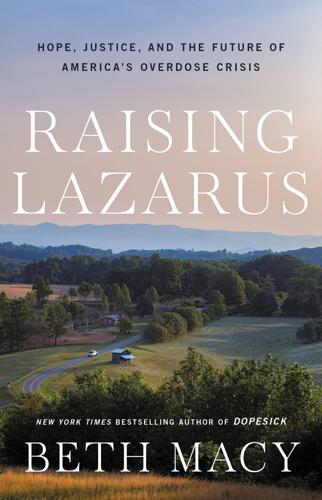
Raising Lazarus: Hope, Justice, and the Future of America’s Overdose Crisis
by
Beth Macy
Published 15 Aug 2022
“Easter Island”: Mike Quinn, author interview, February 17, 2021. against creditors’ claims: Alexandra Clough, “EXCLUSIVE: Sackler family company pays $7 million for mansion near Boca Raton,” Palm Beach Post, October 25, 2019, https://www.palmbeachpost.com/news/20191025/exclusive-sackler-family-company-pays-7-million-for-mansion-near-boca-raton. counted more rehabs: Colton Wooten, “My Years in the Florida Shuffle of Drug Addiction,” New Yorker, October 14, 2019. “I wish they’d hide elsewhere”: Hannah Morse, “Palm Beach County recovery advocates to Sackler family: You belong in jail,” Palm Beach Post, October 21, 2020, https://www.palmbeachpost.com/story/news/local/2020/10/21/palm-beach-county-recovery-advocates-purdue-pharma-sackler-family-you-belong-jail/3716406001/.
…
In a small Tennessee town, a thirty-two-year-old told me she’d already lost 27 percent of her high-school class to overdose. As Tim waited for Sam, the United States Congress debated how to hold to account the Sackler family, sole owners of Purdue Pharma, whose OxyContin painkiller was the taproot of the opioid crisis. The Sacklers are just one node in a vast network of opioid lawsuits broadly acknowledged to be the most complicated in American history. Under pressure from litigation against Purdue Pharma by 2,600 cities, counties, and Native American tribes, and to forestall further lawsuits against the Sackler family, the company filed for Chapter 11 bankruptcy in late 2019. The move was both cunning and literal, as it was preceded by a change of address that allowed the company’s legal reckoning to be determined in the sleepy suburb of White Plains, New York.
…
Bush administration’s DOJ, under pressure from well-connected Sackler-hired hands including Rudy Giuliani and former federal prosecutor Mary Jo White, stymied Mountcastle’s efforts to bring felony charges against the executives. “I’ve now learned that, after 2007, the Sackler family didn’t even read the pleadings,” Mountcastle testified. “Using a different set of lieutenants, they doubled down…When they got caught again in 2020, the resolution came from the same political playbook, only worse. No one was charged, the company took the fall…And now the Sacklers appear to be gaming the system a third time, using a loophole. “The Sackler family is the cartel of the opioid crisis. They used their company and their underlings to profit from repeated criminal conduct while escaping accountability.
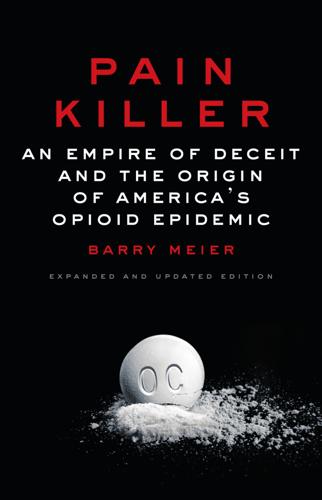
Pain Killer: An Empire of Deceit and the Origins of America’s Opioid Epidemic
by
Barry Meier
Published 29 Oct 2020
An advertising card sent to physicians in 1937 read: “When Spring Comes Gray’s Glycerine Tonic Comp. should be a suggestion to your patient—tired from Winter Ills. Prescribe this dependable Tonic which has stood ‘The Test of Time’ for over forty-five (45) years.” When the Sacklers acquired the company in 1952, it had annual revenues of only $22,000. Purdue’s first products under Sackler-family management did not suggest it would one day produce powerful painkillers like OxyContin. In 1955, Purdue started selling a brand of laxatives under the name Senokot and three years later added the prescription earwax remover Cerumenex to its product line. (Both were successful and are still sold by the company.)
…
He was scheduled to give a talk the following morning at a meeting of the Appalachian Pain Foundation in eastern Kentucky, another area rife with OxyContin abuse. He suggested that Van Zee direct his complaints elsewhere. “I don’t have anything to do with that,” Haddox told him. “This is a marketing-department issue.” The marketing genius of the Sackler family, Arthur Sackler, was long dead when OxyContin appeared. But the strategies that Purdue used to position and promote the drug were as ambitious as any he might have devised. From the beginning, company executives planned to turn OxyContin into the first powerful narcotic ever mass-marketed for common conditions such as lower-back pain, arthritis, surgical pain, fibromyalgia, dental pain, and pain resulting from broken bones, sports injuries, and trauma.
…
After training, each sales rep went out into the field to work a specific geographic territory, under the supervision of a district area manager. Purdue equipped its reps with the most modern pharmaceutical marketing tools available. Like other drugmakers, the company worked with IMS Health, the prescription-data-collection company—in which the Sackler family once held a hidden interest. IMS data told Purdue reps not only how much OxyContin a particular doctor was prescribing but also how many prescriptions were written for competing painkillers. An internal company site updated IMS data as soon as new statistics were available. Purdue marketing officials massaged this data into reports and placed them on the same site, under names such as Outlet Zip Report, Core Coverage Report, and Combo Opportunity Report.
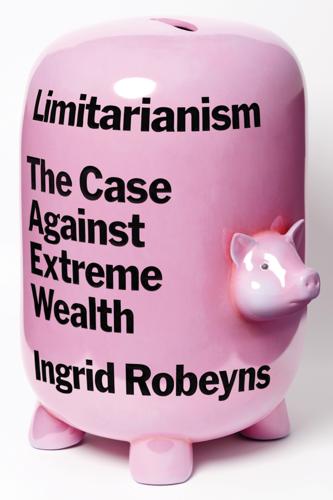
Limitarianism: The Case Against Extreme Wealth
by
Ingrid Robeyns
Published 16 Jan 2024
By 2015, the annual sales of OxyContin came close to $3 billion, while Forbes estimated the Sackler family’s wealth to be at $14 billion.18 The Sacklers became active in philanthropy, in particular giving to major art museums in the UK and USA. Yet with the unfolding of the opioid crisis, which involved several pharmaceutical companies and saw an estimated 500,000 deaths in the US, the Sackler family and Purdue Pharma increasingly came under fire. By 2020, all fifty states had filed lawsuits against Purdue and Sackler family members for their role in the opioid crisis, and Purdue Pharma filed for bankruptcy.
…
Unfortunately, much of the time they succeed. * * * Of course, war crime and state corruption aren’t the only ways that the super-rich amass fortunes while damaging the lives of fellow citizens. Another form of dirty money is gained by business practices that deliberately cause customers harm. Take the Sackler family. The Sacklers own Purdue Pharma, a company that sells OxyContin, an opioid painkiller. In the late 1990s, the company started an aggressive and misleading marketing campaign for OxyContin among primary-care physicians, or general practitioners. In the six years following its approval by the Food and Drug Administration, Purdue Pharma deliberately misled doctors by promoting OxyContin as a drug that was less addictive than other pain medications, knowing this to be untrue.
…
By 2020, all fifty states had filed lawsuits against Purdue and Sackler family members for their role in the opioid crisis, and Purdue Pharma filed for bankruptcy. In October 2020, Purdue Pharma pleaded guilty to criminal charges concerning the misleading marketing of OxyContin. By March 2022, the Sackler family members reached an agreement to pay as much as $6 billion in return for liability protection against all current and future civil claims in this case, and $750 million of the $6 billion has been set aside to compensate the more than 100,000 victims and their relatives. Yet that is a very little comfort for families who, in a matter of months, saw their loved ones become addicted and die—including young adults in their twenties and thirties, who started to take OxyContin following routine medical procedures like root canal treatment.
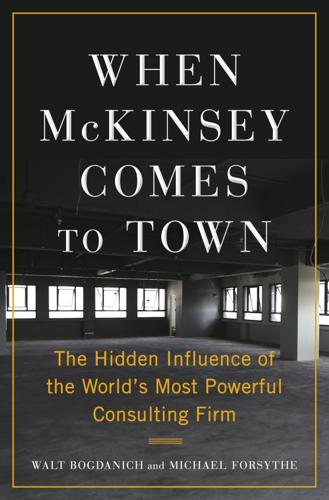
When McKinsey Comes to Town: The Hidden Influence of the World's Most Powerful Consulting Firm
by
Walt Bogdanich
and
Michael Forsythe
Published 3 Oct 2022
To settle government investigations into its role in helping Purdue “turbocharge” opioid sales when thousands of people were dying of overdoses, the firm agreed to pay more than $600 million even as it denied any wrongdoing. Purdue filed for bankruptcy, after agreeing to pay $8 billion to settle government investigations. Its owners, the Sackler family, agreed to pay $4.5 billion in exchange for a legal shield against any further opioid litigation. A federal judge later ruled that the bankruptcy court lacked the authority to grant that protection. The real losers, of course, are the 750,000 people who died in an epidemic kick-started, the government said, by the sale of OxyContin.
…
The reformulation, however, needed FDA approval, so McKinsey lent its expertise, arranging for the firm’s “FDA expert” to speak for two hours with a top Purdue official. “It was extremely helpful to get insights on how they are crafting the response,” Maria Gordian of McKinsey wrote to her colleagues in an email. On January 20, 2009, Gordian reported that McKinsey and Purdue “had a very good FDA rehearsal yesterday,” attended by several members of the Sackler family. “The team did an outstanding job on the study, preparing the client and executing the mock meeting. We are off to DC today for the actually [sic] FDA meeting tomorrow.” Purdue eventually got FDA approval for the reformulation, but it did not change the fact that the drug remained highly addictive and was being prescribed to people for whom less risky options were available.
…
Highly addictive and unregulated, the narcotic was sometimes spiked by street dealers with a synthetic opioid, fentanyl, which is fifty to a hundred times more powerful than morphine. Users didn’t always know that fentanyl had been added or in what amount, and many died from unintended overdoses. To combat a decline in prescriptions, Purdue expanded its sales force, prompting one of Purdue’s owners, a member of the Sackler family, to ask why the company had predicted a decline in OxyContin sales, when he thought they should be rising. At moments like this, Purdue executives again turned to McKinsey. To boost sales amid the strengthening opioid epidemic, McKinsey had to cook up radical new ideas. One suggestion was to promote OxyContin as a drug that gave patients “freedom” and “peace of mind,” along with the “best possible chance to live a full and active life.”
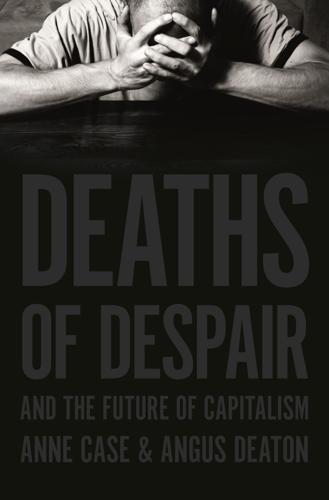
Deaths of Despair and the Future of Capitalism
by
Anne Case
and
Angus Deaton
Published 17 Mar 2020
As we write, in August 2019, the opioid manufacturers are being held to account in the courts; a judge ordered Johnson & Johnson to pay more than half a billion dollars to the state of Oklahoma. A subsidiary of Johnson & Johnson grew the poppies in Tasmania that were the raw material for almost all the opioids produced in the US. Early reports of a settlement with the worst offender, Purdue, the maker of OxyContin, suggest that the Sackler family, who own the company, may lose it, as well as several billion dollars of their past profit. Yet the aggressive marketing of pharmaceuticals to doctors and patients is still in place, as are the rules whereby the Food and Drug Administration approved the use of what is essentially legalized heroin.
…
But they are much less commonly used by doctors or dentists working in the community, or for the long-term treatment of chronic pain. Producers made huge sums of money from legal opioids. According to various reports, including investigative work by the Los Angeles Times, Purdue Pharmaceutical, which is privately owned by the Sackler family, has sold somewhere between $30 and $50 billion worth of OxyContin. Recently released court documents show that the family itself received $12 billion or $13 billion.9 Illegal drug dealers, many from Mexico, have also prospered,10 but legal producers have the advantage of not having arrest or violence as a routine business risk.
…
The opioid story shows the power of money to prevent politics from protecting ordinary citizens, even against death. Until 2019, at least, when rising public outrage eventually changed perceptions, those who got rich were neither ostracized nor condemned but rather recognized and lauded as successful businesspeople and philanthropists. Purdue Pharmaceutical is the leading example. The Sackler family name appears on museums, universities, and institutions, not only in the US but also in Britain and in France. Arthur M. Sackler, who died before OxyContin was developed, was the donor to many of the institutions, including the Metropolitan Museum in New York (the Temple of Dendur), Princeton University, the Smithsonian, and the National Academy of Sciences.
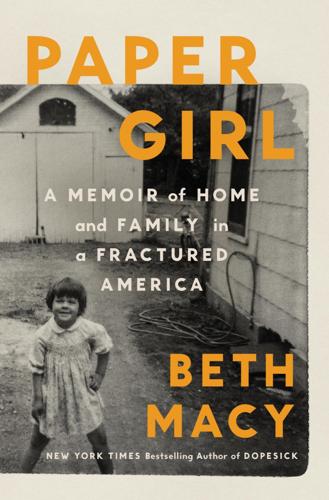
Paper Girl: A Memoir of Home and Family in a Fractured America
by
Beth Macy
Published 6 Oct 2025
“We have to fight back,” she said.[10] In 2024, two Republican lawmakers in the statehouse introduced a bill that would not just allow groups like LifeWise to pull kids out of school for religious teachings but actually require religious-based instruction in all schools.[11] Oklahoma had already passed such a law; Texas would soon follow.[12] “Perhaps, in a show of fairness, these state officials could mandate the teaching of algebra in churches,” one critic quipped.[13] Heather Tiefenthaler, the local Democratic chair, worried about violence in the run-up to the 2024 presidential election. Nationwide, such laws are often penned and championed by the American Legislative Exchange Council, or ALEC, a nonprofit supported by the Koch brothers and other wealthy scions, including fossil-fuel and for-profit prison executives as well as some members of the Sackler family, whose OxyContin painkiller was the taproot of America’s opioid crisis. Among other initiatives, ALEC seeks to privatize education, strengthen gerrymandering, and champion voter suppression by generating model laws for state legislatures.[14] ALEC pushed red states to pass nearly eighty laws restricting what teachers could say about race, sexual orientation, and gender identification, according to a 2024 analysis by The Washington Post.[15] Coupled with an open-enrollment policy where many parents now send their kids to adjacent rural districts with better scores and higher graduation rates—“we joke that West Liberty is the Harvard of Champaign County,” Thiel said—pulling students out of public school propels a vicious cycle that weakens already distressed schools.
…
In his mind, the Haitian influx was unscrupulously designed to provide cheap labor for corporations to make up for the “unreliable worthless drug addicts who refuse to go to work.”[27] Bill had spent his final months fully ensconced in the debunked white-nationalist Great Replacement Theory, supporting such notions that the Jewish Sackler family developed OxyContin with the intent of killing off whites and that the Biden administration’s Jewish members led the way on getting Temporary Protected Status for Haitians for similar reasons. The day of Bill’s funeral, the Trump administration announced it was halting TPS for Haitians, including most of the roughly fifteen thousand living in Springfield.
…
Wade, 121 Rogan, Hayden, 269 Rorty, Richard, 112–13, 291 Rosewood Machine and Tool, 202 rural populations, 53, 177, 179, 185, 257, 293 education and, 45, 86, 213 voters, 108, 109, 160, 187 The Rural Voter (Jacobs and Shea), 108, 109, 187 Rural Urban Bridge Initiative, 47, 203 Russia, 11, 15, 180 Ryan, Tim, 149 S Sackler family, with OxyContin, 198, 307 same-sex marriage, 52, 141, 155, 158, 165, 185, 284, 298 Sanders, Bernie, 15, 113, 179 Sandusky, Jerry, 282 Sandy Hook shooting, 171, 282 Santos, George, 55 Sapp, David M.

Green Swans: The Coming Boom in Regenerative Capitalism
by
John Elkington
Published 6 Apr 2020
A few months later, Anand Giridharadas published his provocative book, Winners Take All.27 With a reputation for skewering plutocrats, Giridharadas argues that the wealthy are using philanthropy to pretend they are changing the world, while maintaining the status quo. He gave the example of the Sackler family, whose fortune derives from the same drugs that have caused the US opioid crisis. An estimated two million Americans suffer from what is called opioid use disorder, based on addiction to these powerful painkillers.28 Obsessed with their financial bottom lines, opioid drug makers flooded America with seventy-six billion pills between 2006 and 2012 alone.29 Enough to supply every adult and child in the country with thirty-six opioid pills a year—when a ten-day supply can hook one in five people.
…
J., 81–84 River Thames, 43 Roadshow, Green Swan, 242–247 Robèrt, Karl-Henrik, 151 Roberts, Russ, 80 Robins, Nick, 208, 243 robotics, 177 Rockefeller Foundation, 138 Romanovitch, Sacha, 125 Roosevelt, Franklin D., 16, 235 Rose, Charlie, 183 Rosling, Hans, 28 Roundup herbicide, 68 Russia, 113–114 Ruxton, Jo, 92 S Sackler family, 13 Sagan, Carl, 183 Samsung, 126 Scharmer, Otto, 37 Schneider, Mark, 96 Schumpeter, Joseph, 203 Schwarzenegger, Arnold, 77–78 science, 83–84, 121–123, 183–184, 217–218 Scientific American (magazine), 65, 98–99 Seba, Tony, 241 737 Max 8 aircraft, Boeing, 194–197 Shanghai, China, 108–109 shared natural resources, 204 shared value, 59–60, 149f shareholder primacy, 14, 205 shareholder value, 149f Sharpe, Bill, 37 Shell, 119, 214 Siemens, 216 Silent Spring (Carson), 193 Singularity University (SU), 35–36, 83, 186–187, 188, 237–238 Slope of Enlightenment stage, Gartner Hype Cycle, 175 smart cities, 177 Smit, Tim, 215, 216, 218, 237 Smith, Adam, 18, 25, 80, 85 social media, Black Swan thinking in, 53 Social Stock Exchange, 218 Societal Needs, in GGC approach, 187 society climate-induced collapse, 8, 10 in Future-Fit change approach, 149, 149f, 150, 150f, 151, 152f Green Swans in, 42 leading-edge business models and, 52 Novo Nordisk engagement with, 156, 157–158 Sonar, 140–141 Sørensen, Lars Rebien, 155–158 Sorrell, Martin, 124–125 Soskice, David, 211–212 space junk, 111–116 SpaceX, 115 SPARK 2019 conference, 244–245 sponge cities, 136, 255 Stalin, Joseph, 203 State of New York, 128–129 Steele, Tanya, 200, 224 Steffen, Alex, 67 Stelzer, Irwin, 5, 15, 196 Stiglitz, Joseph, 60, 204 stock exchanges, tracking wicked problems in, 90–91 Stockdale, James, 229 Stoermer, Eugene, 87 Stormer, Susanne, 159 stranded assets, 48, 71–73, 243 The Structure of Scientific Revolutions (Kuhn), 121–122, 191, 230 subsidies for fossil fuels industry, 67 Suez Western Australia, 134 The Sun Also Rises (Hemingway), 79 super wicked problems, 84–86 Superbugs exhibit, London Science Museum, 106–107 Superfund legislation, US, 136 Susskind, Jamie, 224 sustainability.
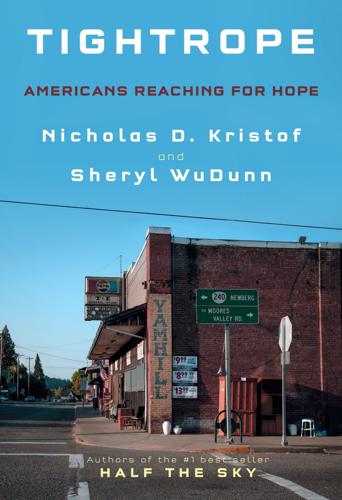
Tightrope: Americans Reaching for Hope
by
Nicholas D. Kristof
and
Sheryl Wudunn
Published 14 Jan 2020
* * * — THE STORY OF AMERICA’S current addiction nightmare begins in the 1990s, when the pharmaceutical industry was looking for a new blockbuster drug to market. Opioids were then seen as addictive and useful only for extreme pain or for those with terminal cancer, but business executives believed that opioids could be hugely expanded into a lucrative market. So the pharmaceutical industry, led by Purdue Pharma and the Sackler family who owned it, marshaled a sophisticated campaign to treat pain more aggressively—with their opioid prescription painkillers. Those OxyContin pills that got Daniel addicted were manufactured by Purdue. Pharmaceutical companies commissioned reports arguing that doctors were allowing patients to suffer unnecessarily.
…
The company was vigorously defended by Rudy Giuliani, and its $600 million fine was negligible compared to the $35 billion that it is estimated to have earned from OxyContin. Individual executives from Purdue were also convicted and made to pay substantial fines, but they never served a day of jail time. Purdue was allowed to continue selling opioids, and the Sackler family is now worth $13 billion. Some 80 percent of Americans addicted to opioids began with prescription painkillers, not with illegal street drugs. Essentially, pharmaceutical executives acted like Colombian drug lords, with legal approval. Many cities and states, including Baltimore, are now suing Purdue and other pharmaceutical companies to recover some of the costs of treating the opioid epidemic, but no one can ever give Daniel back what he lost.

The Bill Gates Problem: Reckoning With the Myth of the Good Billionaire
by
Tim Schwab
Published 13 Nov 2023
Rockefeller and Andrew Carnegie had used charity late in life to paper over the destructive business ventures that had made them so wealthy. And American philanthropy has always had a particularly rich tradition of scandal and controversy. In recent years, we’ve learned that convicted sex offender Jeffrey Epstein used charitable donations to build a network of influence that immunized him from public scrutiny. The Sackler family, whose profiteering from the sales of OxyContin helped drive an opioid epidemic in the United States, leaned hard into philanthropy to distract polite society from looking too closely into the source of their wealth. Lance Armstrong built a reputation as a humanitarian through his charitable work with the Livestrong foundation even as he faced accusations—later confirmed to be true—that his dominant cycling career had been fueled by performance-enhancing drugs.
…
the richest man in the world: Lisa Singhania, “Gates Stays Atop Billionaires Club,” Washington Post, June 16, 2000, https://www.washingtonpost.com/archive/business/2000/06/16/gates-stays-atop-billionaires-club/453c7e6b-804b-4e90-acdf-8629a11f33e6/. he has slipped in the rankings: “The World’s Real-Time Billionaires,” Forbes, n.d., https://www.forbes.com/real-time-billionaires/. Sackler family: Tim Schwab, “US Opioid Prescribing: The Federal Government Advisers with Recent Ties to Big Pharma,” BMJ 366 (August 22, 2019): l5167, https://doi.org/10.1136/bmj.l5167. fueled by performance-enhancing drugs: Corrie MacLaggan, “Exclusive: Livestrong Cancer Charity Drops Lance Armstrong Name from Title,” Reuters, November 15, 2012, https://www.reuters.com/article/us-cycling-armstrong-livestrong-idUSBRE8AE00020121115.
…
Rockefeller Foundation Rockefeller Philanthropy Advisors Rodale Institute Roe v. Wade Rolling Stone Roosevelt, Theodore Rosenberg, Tina Rotary Foundation RotaTeq vaccine rotavirus vaccines Roundup Roux Prize Rubin, Eric Rubio, Marco Russia Rust, Tom Rutazibwa, Olivia U. Rwanda Sackler family Salesforce Sanders, Bernie San Diego equestrian facility Sanford, Stefanie Sanger, Margaret sanitation Sanofi Pasteur Sayana Press schistosomiasis vaccine Schmidt, Eric Schmidt Futures Schock, Aaron schools charter private Schrödinger company Schurman, Rachel Schwartz, Andrew Scientific American Scott, Cheryl Scott, MacKenzie Scripps Seattle Seattle Post-Intelligencer Seattle Times Securities and Exchange Commission Senderowicz, Leigh Senegal Serum Institute of India “Seven Million Lives Saved” (McArthur) sex trafficking sexually transmitted diseases sex workers Seychelles Shah, Rajiv Shapiro, Ari Sheppard, Kate shigella vaccines Sierra Leone Silicon Valley Silicon Valley (TV show) Silver Lake Simpsons, The Sinema, Kyrsten Singapore Singer, Peter Sinopharm 60 Minutes (TV show) SK bioscience Sky News Slalom consulting Slate Slate Group Slim, Carlos smallpox Smith, Jeremy N.
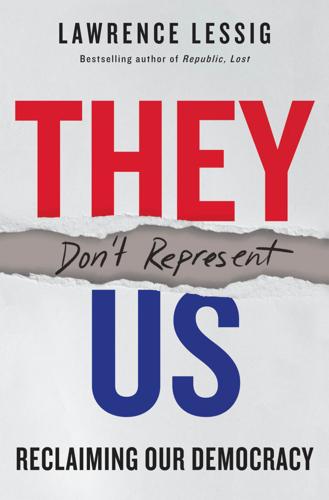
They Don't Represent Us: Reclaiming Our Democracy
by
Lawrence Lessig
Published 5 Nov 2019
On the general problem of influence with pharmaceuticals, see Lawrence Lessig, America, Compromised (Chicago: University of Chicago Press, 2018), ch. 4; Beth Mole, “Big Pharma Shells Out $20B Each Year to Schmooze Docs, $6B on Drug Ads,” Ars Technica, January 11, 2019, available at link #53. 94.See Chris McGreal, “FDA’s Opioids Adviser Accuses Agency of Having ‘Direct’ Link to Crisis,” Guardian, January 24, 2019, available at link #54. 95.Or at least the part of the Sackler family associated with two of the three original Sackler brothers; Arthur Sackler was not involved in the company when it developed and pushed its opioid, OxyContin. 96.At least in the sense of institutional corruption that I describe in America, Compromised. 97.Except as indicated, the facts in this section are drawn from the extraordinary article by Patrick Radden Keefe, “The Family That Built an Empire of Pain,” New Yorker, October 30, 2017, available at link #55. 98.Ethan Barton, “American Cartel: Here Are the Politicians That Took Opioid Tycoons’ ‘Dirty, Bloody Money,’” Daily Caller, March 14, 2018, available at link #56. 99.Chris McGreal, “How Big Pharma’s Money—and Its Politicians—Feed the US Opioid Crisis,” Guardian, October 19, 2017, available at link #57. 100.For the founding rule on recusal statutes, see Nevada Commission on Ethics v.
…
See also money partisan ideological splits, 26–27 percentage “conservative,” 29 presidents without plurality, 107 primary voter turnout, 23 Purdue Pharma contributions, 46 science rendered politically, 96–97, 125 Tea Party right, 24, 62, 63 voter suppression, 15–17, 63 voting burdens, 12, 13–14, 17 Roper, Elmo, [68nn4–5], 69, 281n4, 282n5 Rosenfeld, Sam, 25–26 Russian effect on 2016 elections, 120–121, 217, 293n116 Sackler family’s OxyContin, 45–46 not Arthur Sackler, [45n95], 275n95 “safe-seat democracy,” 22, 24–25, 28, 29, 62–63, 152, 153 sampling for opinion poll, 68, 132, 188, 282n5, 295n131 Sanders, Bernie, 50, 56, 57, 61, 104, 231 Sarbanes, John, 250–251 science rendered politically, 95–98, 125 Senate 2018 campaign contributions, 140, 142 amendments to bills, 159 elected by the people, 32–33, 156 Equal Suffrage Clause, 31, 139, 156, 300n23 filibuster reform, 158–159 fixes for representativeness, 156–160 “hold” reform, 157–158 majority disempowered by, 30–31, 33–34 one person, one vote exemption, 8, 30–31, 33, 63, 156, 160 pharmaceutical company contributions, 46 rules changes for representativeness, 157–160 seniority system reforms, 159–160 state legislatures appointing, 31–32 state representation, 3–4, 30–34, 63, 64, 156, 157 veto absolute, 33 See also Congress Seventeenth Amendment, 32, 249 shadow congresses, 188–190 shadow conventions, 182–186 Shapiro, Robert, 76–77, 83, 126, 254 Shelby County v.
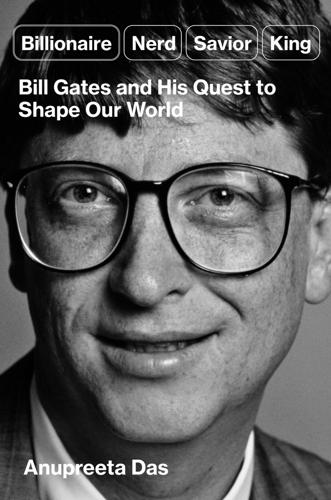
Billionaire, Nerd, Savior, King: Bill Gates and His Quest to Shape Our World
by
Anupreeta Das
Published 12 Aug 2024
Still, the inflow of money into donor-advised funds for the year, at about $50 billion, was far higher than the outflow.25 In 2021, when the S&P 500 stock market index hit record highs, the inflows doubled to $72 billion. Payouts also increased, but by a much lower amount, according to the Trust. Tax incentives aside, many billionaires also give to manage and burnish their reputations. Grand philanthropic gestures acted at least partly as a shield for the Sackler family even as they knowingly fed an opioid addiction crisis around the country, and made billions off selling Oxycontin through their company, Purdue Pharma.26 For years, the Sackler name graced museum wings and art institutes, endowed university chairs, supported medical research and more, and family scions were often seen talking about their family’s philanthropic traditions.
…
Wade, 109–110, 167 Rogen, Seth, 107 Rogers, Fred, 96, 243–244 Rolling Stone, 38, 51 Rolling Stones, 65 Roosevelt, Franklin D., 24 Rose, Charlie, 79 Ross, Bob, 243 Rotary International, 104, 177 Rotterdam, 271 Rubenstein, David M., 26, 135–136 Rudolph, Maya, 145 RuneQuest (game), 51 Russian invasion of Ukraine, 279 Sackler family, 28 Saez, Emmanuel, 257 Sager, Jeannie Infante, 22, 170 St. Paul, Minn., 13 Salesforce, 181, 259 Sánchez, Lauren, 144 Sandberg, Sheryl, 54, 263 Sanders, Bernie, 257–258, 260 Sandy Hook Elementary School, 246 Saturday Night Live, 53 Saunders-Hastings, Emma, 187 Sawyer, Diane, 148 Scarry, Richard, 109 Schervish, Paul, 194 Schmitz, Hans Peter, 136 Schultz, Howard, 139 Schwarzman, Stephen A., 26, 120 Scialfa, Patti, 159 science, technology, engineering, and math (STEM) fields, 53 Scott, MacKenzie, 45, 144–145, 170, 191, 204, 263 SD Biosensor, 176 Seattle, Wash., 34, 66–67 Seattle Computer Products, 35 Seattle Post-Intelligencer, 155, 159 Seattle Public Library, 98 Seattle University, 22, 171 Seitz, John, 27 self-made, 262–263 Senate Finance Committee, 258 Seshadri, Vignesh, 249–250 Seven Samurai (film), 44 sexual abuse, 22 sexual harassment, 238–243 Shafik, Minouche, 193 Shah, Rajiv, 182 Sharp, Isadore, 213 Sheldon (fictional character), 52–53 Sheraton New York Times Square Hotel, 125 Shiva, Vandana, 190 Shoe Dog (Knight), 11 Signature Aviation, 213 Siino, Rosanne, 43, 55–56, 58 Silicon Graphics, 43 Silicon Valley, 48, 55 Silicon Valley (TV show), 52–53 Silicon Valley Bank, 49 Silicon Valley Community Foundation, 205 Simpsons, The, 93 Singer, Peter, 205 Sinofsky, Steven, 228 sitcoms, 53 Sixteen Candles (film), 51 Sloan School of Management, 69 small-dollar donations, 25, 29 smartphones, see iPhones Smil, Vaclav, 101 Smith, Brad, 82 Smith, Robert, 157, 263 Snowflake Computing, 33 social franchising, 200 social media platforms, 107 Social Network, The (film), 52 Softimage, 70 Sonsini, Wilson, 78 Soon-Shiong, Patrick, 273 Sorkin, Andrew Ross, 260 Soros, George, 202, 245, 272 Soul of a New Machine, The (Kidder), 40 South Carolina, 272 Spacewar (game), 39 “Spacewar: Fanatic Life and Symbolic Death Among the Computer Bums” (Brand), 38 SpaceX, 10 Spelman College, 193 spend-down foundations, 280–281 Spielberg, Steven, 100 Spiers, Elizabeth, 49 Springsteen, Bruce, 159 Springsteen, Jessica, 159 S&P 500 stock market index, 28, 44 Square, 204 Sridhar, Devi, 248 Srinath, Ingrid, 196 Staley, James E., 229–231, 232 Standard Oil, 62–64 Stanford University, 48, 50, 56, 57, 73, 74, 98, 159 Stanley Farms, 211 Starbucks, 139 Star Trek (film), 51 start-up founder myths, 47–49 Staten Island, N.Y., 20 STEM (science, technology, engineering, and math) fields, 53 Sterling, Alton, 13 Steyer, Tom, 273 Stone, Roger, 247 Stoneham, Mass., 10 Stonesifer, Patty, 98 Stranger Things, 51 Strategic Property Partners, 208 Streeter, Thomas, 41, 47 Strive Capital, 272 Sturken, Marita, 244 Succession (TV show), 112 Summers, Larry, 229, 237 Sunderland, Julie, 192 Sun Microsystems, 41 Sun Valley, Idaho, 9–10, 12–14, 54 Superstorm Sandy, 21 Supreme Court, 22, 109, 167, 171 Surrender (Bono), 100 Susan Thompson Buffett Foundation, 122 Suzman, Mark, 127, 189, 193 Swachh Bharat Abhiyan (Clean India Mission), 194 Swenson, Signe, 233 Sydow, Bob, 215–216 Tahrir Square, 255 Tampa, Fla., 207–209 Tampa Bay Lightning, 207–208 Tarbell, Ida, 64 Tax Reform Act of 1969, 27 TB, 200, 277 technology sector, of economy, 44–46 TED talks, 101, 246–247 telemedicine, 200 TerraPower, 223 Tesla, 10, 44 Thatcher, Michael, 147 Theranos, 50 Thiel, Peter, 44, 56, 272 Thomas, Clarence, 272 3G Capital, 13 Tia (company), 165 Tierney, Tom, 193 Tilden Foundation, 120 Time magazine, 43, 50, 70, 100, 154, 181 Time’s Up movement, 239 TIPS (Treasury Inflation-Protected Securities), 214 Titan: The Life of John D.

Survival of the Richest: Escape Fantasies of the Tech Billionaires
by
Douglas Rushkoff
Published 7 Sep 2022
The Covid pandemic created at least nine new billionaires off vaccine profits alone— enough wealth to fully vaccinate all people in low-income countries 1.3 times. I don’t believe that philanthrocapitalists such as Mark Zuckerberg, Elon Musk, or Bill Gates are exploiting or perpetuating our global crises with the same cynical self-interest as Halliburton approaching global unrest or the Sackler family capitalizing on opiate addiction. On the contrary, they do mean, in their own ways, to solve our many problems and maybe get some of the credit. But their unthinking acceptance of The Mindset and its underlying premises renders their solutions untenable. The worse things get, the easier it is to justify The Mindset.

On Breathing
by
Jamieson Webster
Published 20 Feb 2025
Depression is obviously a cause for suicide, but so is chronic sexual dysfunction. Depression causes sexual dysfunction, but so does its cure. An impossible loop—claustrophobic and closed—as if there were no exit from sedation. Increased prevalence of fentanyl is related to big pharma’s aggressive promotion of opioid use, creating, as just one example, the Sackler family’s $11 billion OxyContin fortune. Fentanyl, unlike heroin, is cheap. Very cheap. And very, very strong. Prescription opioids are often the gateway to street variants, even more easily obtained than a prescription. In 2019, there were 1.6 million new users of prescription pain medication, the majority of whom said they took them for pain not for pleasure.
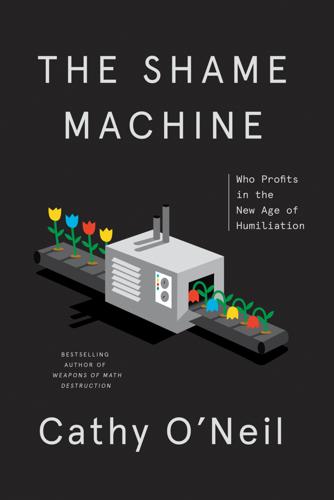
The Shame Machine: Who Profits in the New Age of Humiliation
by
Cathy O'Neil
Published 15 Mar 2022
Only with greater openness and disclosure will the blueprint of the shame machines come into focus. Only then will we be able to develop strategies for grinding these engines to a halt. One way, of course, is to use shame itself, punching up at the oppressors. We see this happening already. Activists have shamed Purdue Pharma, and the Sackler family that owns it, for their role in hooking millions on opiates. This pressure, in the form of shaming protests and lawsuits, has pushed the company into bankruptcy and forced the owners to make multibillion-dollar restitutions. The family name, now stigmatized, is being scraped from the museums and university halls they funded with dirty money.
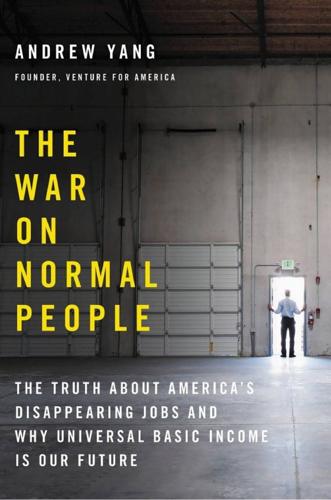
The War on Normal People: The Truth About America's Disappearing Jobs and Why Universal Basic Income Is Our Future
by
Andrew Yang
Published 2 Apr 2018
Recall the case of Purdue Pharma, the private company that was fined $635 million in 2007 by the Department of Justice for falsely promoting OxyContin as nonaddictive and tamper-proof. $635 million seems like a lot of money. But the company made $35 billion in revenue since releasing OxyContin in 1995, primarily from its signature product. The family that owns Purdue Pharma, the Sackler family, is now the 16th richest family in the country with a fortune of $14 billion—they have a museum at Harvard and a building at Yale named after them. If you’re going to make $35 billion, paying $635 million—only about 2 percent—seems like a fine price to pay for success. Meanwhile, the rest of us will be dealing with hundreds of thousands of opioid addicts for years to come.
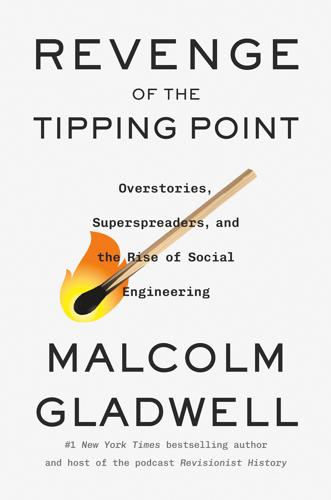
Revenge of the Tipping Point: Overstories, Superspreaders, and the Rise of Social Engineering
by
Malcolm Gladwell
Published 1 Oct 2024
Except, that is, for an obscure drug company in Connecticut named Purdue Pharma. 5. Purdue had been in the painkiller business for years, with a slow-release morphine tablet it called MS Contin. MS Contin was used primarily by late-stage cancer patients, in hospices and back at home. It was a good business, but a small one. The Sackler family, which ran Purdue, had grander ambitions. They switched their focus to oxycodone. Typically, oxycodone had been combined with acetaminophen or aspirin. That’s what Percocet and Percodan are, respectively, and that combination made oxycodone harder to abuse, because if you consume too much acetaminophen, you will do serious damage to your liver.
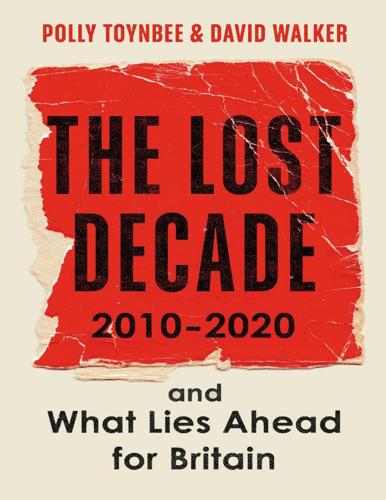
The Lost Decade: 2010–2020, and What Lies Ahead for Britain
by
Polly Toynbee
and
David Walker
Published 3 Mar 2020
Only one in ten of the UK’s highest-net-worth individuals were charitable donors, and the median annual gift of those worth more than £10 million was a measly £240 a year. Serota would find it very hard to generate a sense of shame, and the UK rich could not even be bribed: tax reliefs produced only marginal increases in giving. Besides, some money was tainted. Among the most generous donors to the arts had been the Sackler family, their name adorning the Serpentine Gallery and other good causes. However, after much litigation relating to the role of the family’s pharmaceutical companies in the US’s opioid epidemic, the Sackler name became almost as toxic as their medicine. As the climate emergency regained its hold on public and political consciousness in 2018 and 2019, Oscar-winning actor Mark Rylance spearheaded the campaign against fossil-fuel use and greenwashing by resigning from the Royal Shakespeare Company in protest at BP’s sponsorship.
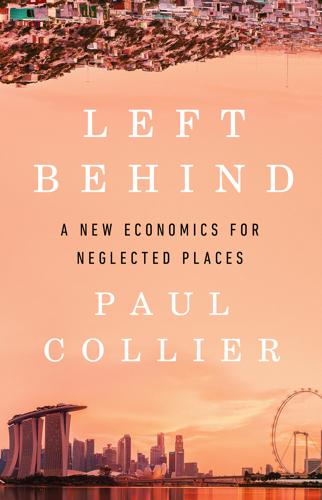
Left Behind
by
Paul Collier
Published 6 Aug 2024
The US pharmaceutical industry has both drag-you-down companies like Purdue and raise-me-up ones like Johnson & Johnson. Purdue paid doctors to prescribe highly addictive drugs as painkillers when a cheap, non-addictive generic drug would have been far safer. When the story leaked out, Purdue went bankrupt, but its owners, the Sackler family, have been able to retain the $10 billion they extracted from it. They have been protected from class actions for the redress of addicted people by favourable interpretations of contracts pitched by lawyers highly paid to be persuasive. In contrast, Johnson & Johnson pioneered the approach in which the CEO sets a worthwhile common purpose, devolving and empowering employees to achieve it.
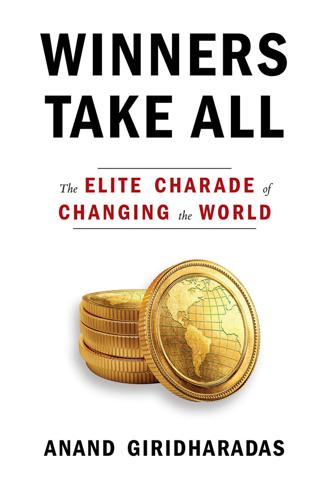
Winners Take All: The Elite Charade of Changing the World
by
Anand Giridharadas
Published 27 Aug 2018
It acknowledged that it had marketed OxyContin “with the intent to defraud or mislead,” and it agreed to pay $635 million in fines and other outlays. It was one of the largest fines ever paid in such a case, but only an inconvenience when compared to how lucrative OxyContin was becoming. In 2015 Forbes declared the Sackler family the “richest newcomer” to its annual list of wealthy families, with a net worth of $14 billion. Noting that the family had edged out “storied families like the Busches, Mellons and Rockefellers,” it asked, “How did the Sacklers build the 16th-largest fortune in the country? The short answer: making the most popular and controversial opioid of the 21st century—OxyContin.”
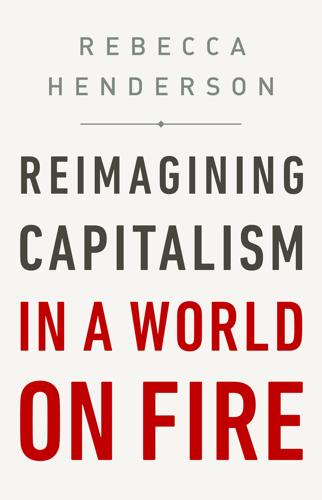
Reimagining Capitalism in a World on Fire
by
Rebecca Henderson
Published 27 Apr 2020
Gretchen Morgenson, “Defiant, Generic Drug Maker Continues to Raise Prices,” New York Times, Apr. 14, 2017, www.nytimes.com/2017/04/14/business/lannett-drug-price-hike-bedrosian.html. 19. Joyce Geoffrey et al., “Generic Drug Price Hikes and Out-of-Pocket Spending for Medicare Beneficiaries,” Health Affairs 37, no. 10 (2018): 1578–1586. 20. Danny Hakim, Roni Caryn Rabin, and William K. Rashbaum, “Lawsuits Lay Bare Sackler Family’s Role in Opioid Crisis,” New York Times, Apr. 1, 2019, www.nytimes.com/2019/04/01/health/sacklers-oxycontin-lawsuits.html. 21. “Big Oil’s Real Agenda on Climate Change,” Influence Map, 2019, https://influencemap.org/report/How-Big-Oil-Continues-to-Oppose-the-Paris-Agreement-38212275958aa21196dae3b76220bddc. 22.
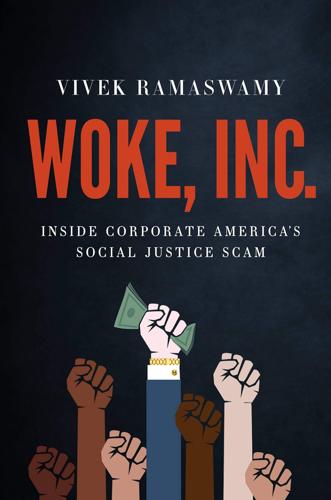
Woke, Inc: Inside Corporate America's Social Justice Scam
by
Vivek Ramaswamy
Published 16 Aug 2021
Professor Thomas Jones of the University of Washington in Seattle explains that “the corporation which acts in a responsible manner may simply be paying society back.”8 Stakeholderist-in-chief Larry Fink borrows this logic when he frequently proclaims that “companies need to earn their social license to operate every day.”9 The shield of limited liability is what allows entrepreneurs to raise capital from outside investors who can bet on risky new ventures while limiting their losses to the amount of their investment. But it’s also what allows the Sackler family to remain multibillionaires even as their wholly owned company, Purdue Pharma, goes bankrupt for having illegally marketed a painkiller that resulted in hundreds of thousands of deaths globally. It’s what allows President Donald Trump to remain a billionaire even though many of his properties have defaulted on their debts over the years, including payments to contractors who were struggling to make ends meet.
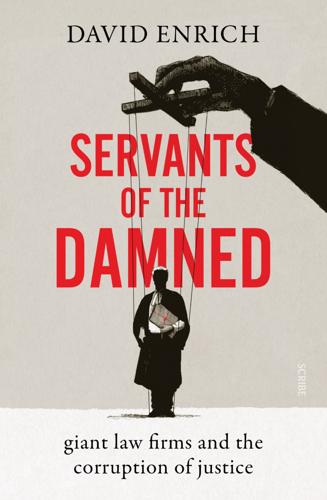
Servants of the Damned: Giant Law Firms and the Corruption of Justice
by
David Enrich
Published 5 Oct 2022
Reasonable people might disagree about whether lawyers can ever ethically represent a company as sinister as Purdue—one that ignited a public health crisis for the sake of its founding family’s fortune. “Not that there isn’t room to represent corporations; that’s worthy work,” the Massachusetts attorney general, Maura Healey, told Patrick Radden Keefe, the author of Empire of Pain, about the Sackler family that owned Purdue. “But this corporation? These people? It’s no different from representing a drug cartel, in my mind.” Jones Day was proud of its representation. Purdue was one of the clients that the firm boasted about as it sought jobs with prospective customers. The online bios of quite a few of the firm’s lawyers—including John Normile, the partner who’d been involved in Christian Meister’s firing years earlier—mentioned their roles protecting OxyContin.
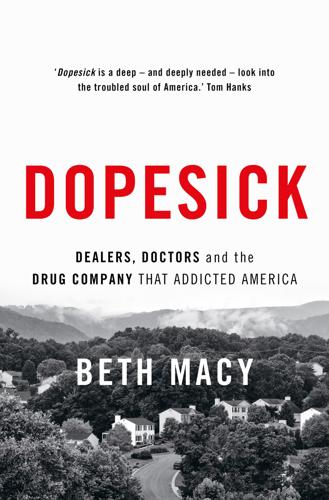
Dopesick: Dealers, Doctors and the Drug Company That Addicted America
by
Beth Macy
Published 4 Mar 2019
“Their lawyers were shocked,” the negotiator added. “They did not expect the firmness with which we approached this.…Had they not agreed, we were fully prepared to take them to trial.” The Sacklers, anyway, were convinced. Midway through the negotiations, following a Washington meeting of both sides, word filtered down from the Sackler family: “We can’t buy our way out of this one. Make this case go away,” the government negotiator recalled. If that meant throwing three executives under the bus, well, then, the men had been loyal employees for many years. But the Sacklers had to do what the Sacklers had to do. The Sacklers understood that a federal jury convened in southwest Virginia, a region that had now seen as many as two hundred OxyContin-related deaths, could have awarded far harsher penalties.